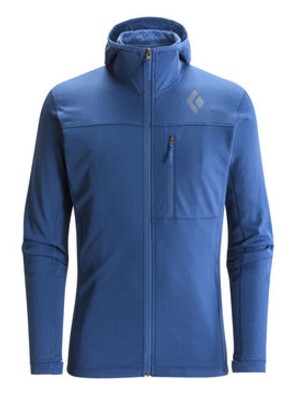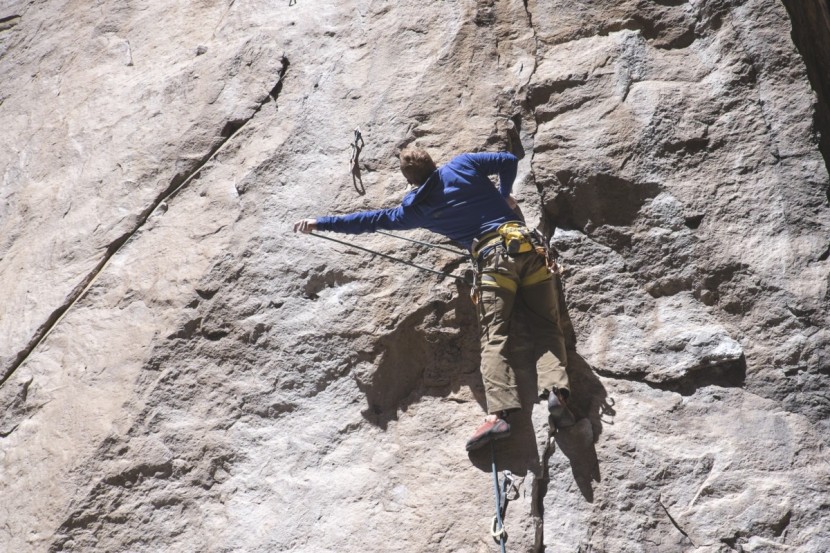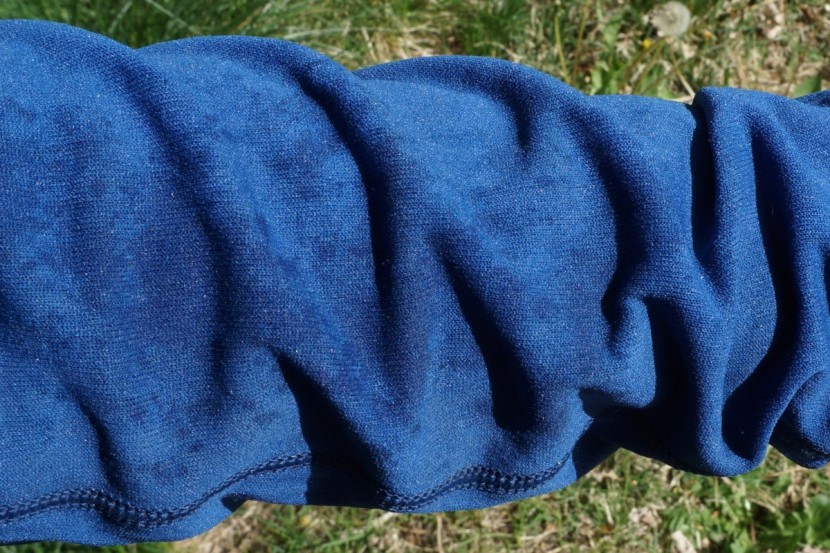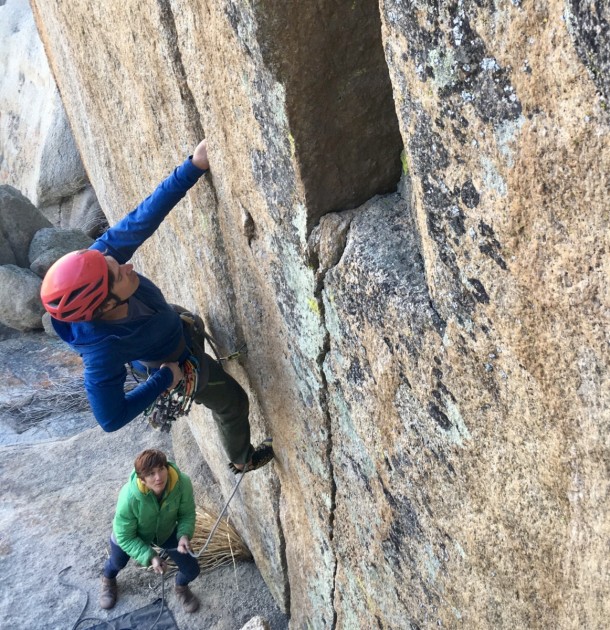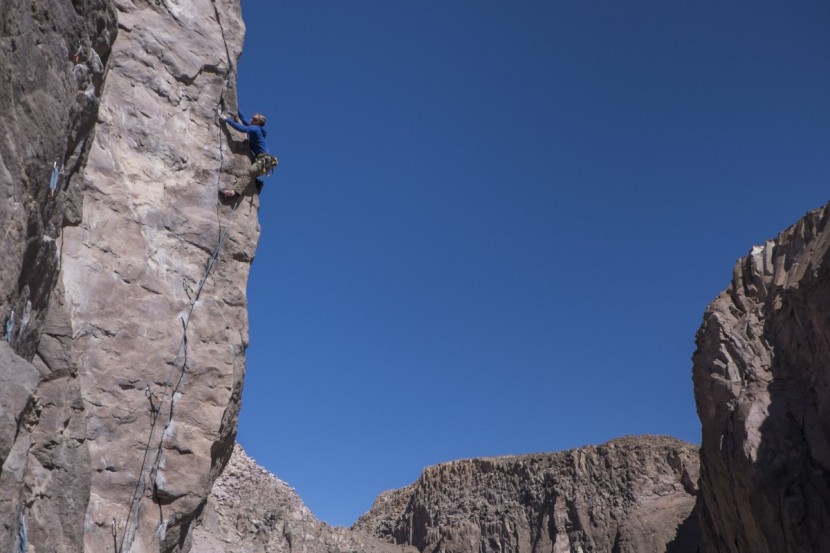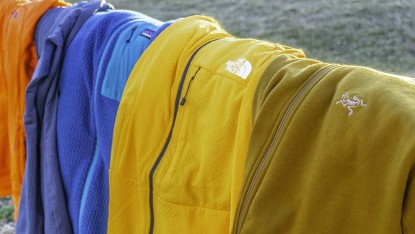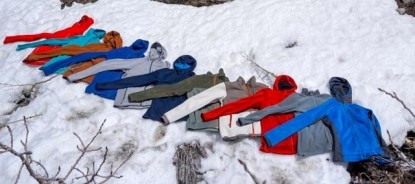Black Diamond CoEfficient Hoody Review
Our Verdict
Our Analysis and Test Results
The slim fitting $159 Black Diamond CoEfficient Hoody is a lightweight, breathable fleece built with climbers in mind. It has one chest pocket, a snug fitting hood, and a long hem that fits very well under a harness or backpack waistbelt. Great for layering, this fleece is available in Black, Cargo, Denim, and Nickel.
Warmth
Constructed with Polartec Power Dry gridded fleece, this jacket favors breathability over warmth. The “bumps” in the internal grid pattern are much smaller and have a lower profile the grid pattern on the R1. This results in less room for small pockets of trapped air that keep you warmer. The North Face FuseForm Progressor Hoody is slightly warmer, less breathable, and also designed with climbers in mind. For a touch, more warmth at half the price of the Coefficient Hoody, check out the Best Buy Award Winning Marmot Reactor.
Comfort
The long and narrow cut of this jacket is utilitarian, great for layering and staying tucked under a harness or down a ski bib, but not the most comfortable for lounging around in. The jacket is so long that when our testers sit down, the bottom the jacket would roll up and bunch around the waist. The Internal grid pattern is soft on the skin. Combined with a lack of bulky, zippered hand warmer pockets, this is a nice layer for sleeping in. The hood fits well under a helmet and zips up to fit loosely and comfortably under the chin. If you're looking for a similar layer to live in 24/7, our testers agree that the R1 or the Outdoor Research Transition Hoody are more comfortable choices. While the Coefficient scored a 7 out of 10 in this metric, it was bested by the Patagonia R3, Arc'teryx Fortrez Hoody, Mountain Hardwear Monkey Man Grid II Hooded, and the Patagonia Better Sweater.
Breathability
The BD Coefficient Hoody is the most breathable jacket in this year's lineup, scoring a 10 out of 10! In a side by side comparison with its close competitor, the Patagonia R1 Hoody, the Coefficient left us less sweaty after a thigh-burning hike out of the Owens River Gorge. Again, this is achieved by sacrificing thick insulating loft for breathability. Additionally, a full zipper allows for more venting than the R1's half zip. Ultimately, the R1 still took home our top pick for breathability because it's breathable and warm. If you're looking for a much warmer jacket that's still incredibly breathable, check out our Editors' Choice Award winner, the Patagonia R3 Hoody.
Layering Ability
This slender jacket is an impressive layering piece, scoring a respectable 9. Since there are no handwarmer pockets, there isn't any extra bulk to get caught or restrict movement when the jacket is under a puffy and a hard shell layer or tucked into ski pants. The thin cut is form-fitting, so no fabric bunches up around the torso, though, as previously mentioned, the waist may roll up if it's not tucked in or under a harness. Additionally, thumbs loops make it easy to slide into other layers without bunching up the sleeves. The Patagonia R1 and The Outdoor Research Transition Hoody were the only contenders to score a 10 out of 10 for their layering abilities.
Weather Resistance
While excelling at breathability, the Coefficient Hoody is lacking in weather resistance. While this is a concern for those who are looking for one fleece for all conditions, our testers don't expect much weather resistance from their fleeces, opting for a windbreaker or a hardshell when mother nature decides to crank up the AC, blasting rain or snow. The wind cuts through the Coefficient with little resistance. Still, in our rain testing, this jacket was able to repel off small droplets of moisture better than The North Face FuseForm Progressor Hoody and a touch better than the R1. All of these jackets soaked up heavier precip like a sponge. If weather resistance is something you're looking for in a fleece, check out The North Face Denali 2, the only jacket in this category that offered some resistance against a downpour.
Style
A sleek and techy design make this jacket great for the mountains, but the snug fit and long cut are not the best for a night on the town. The North Face FuseForm Progressor Hoodie strikes a much better balance between function and style, offering a wider, shorter cut than the Coefficient. Check out the Patagonia Better Sweater or the Arc'teryx Covert Hoody if style is a main concern.
Best Applications
The Coefficient Hoody is a solid choice for a mid layer or even a heavy base layer. The long cut and thumb loops for easy layering optimize this jacket for alpine climbing and ski touring. It is too thin to use as a standalone piece against cold breezes and light rain. Looking for more warmth? We'd recommend the Patagonia R1 Hoody, an excellent, roomier layering piece.
Value
$159 puts this jacket at the same price as the venerable Patagonia R1 Hoody, and $30 cheaper than the feature-laden Arc'teryx Fortrez Hoody. If you're like us, you'll spend hundreds of hours hiking and sleeping in this versatile, breathable layer.
Conclusion
Climbers and hikers will find they have it made in the shade with this jacket. It's a great layering piece and it takes the edge off those chilly alpine starts. If you're not into the fit of the R1 Hoody, or you feel like the R1 is too hot, the Coefficient could be just what you're looking for.


